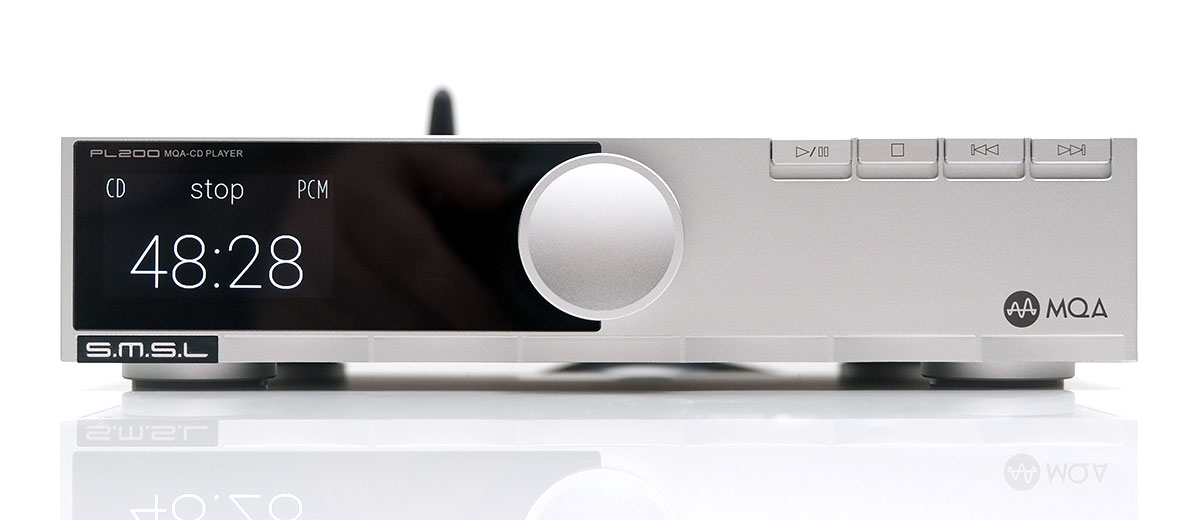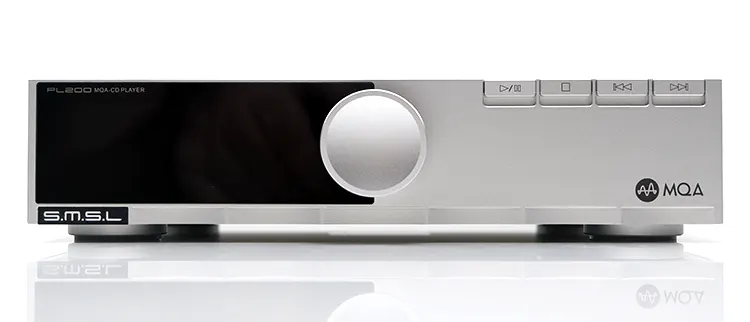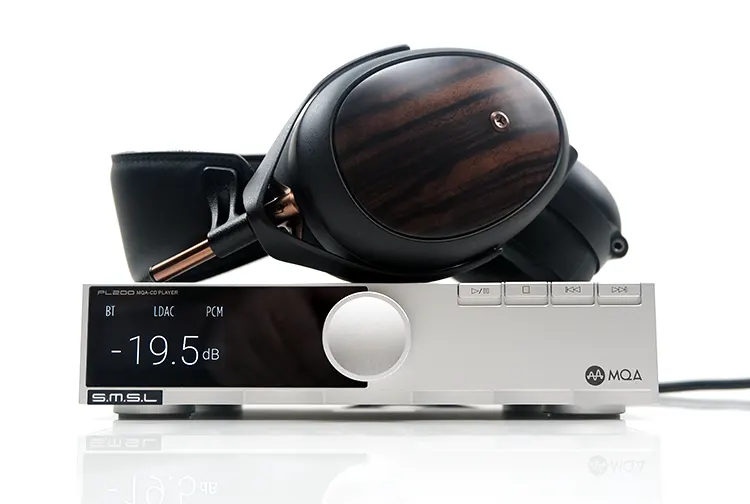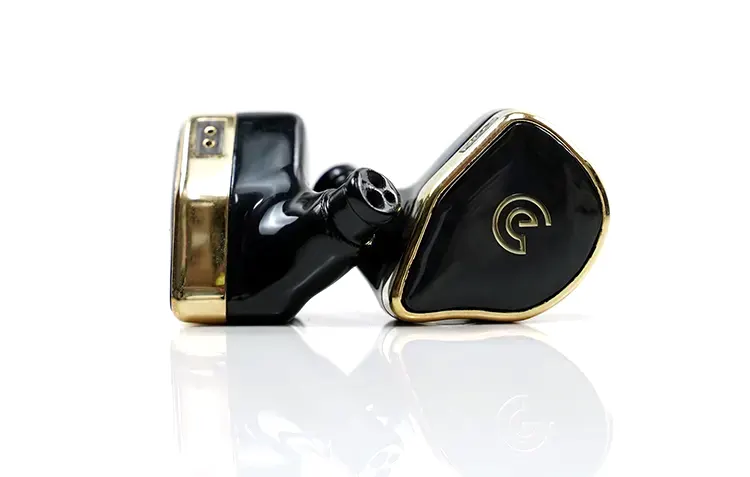Sound Impressions
The following sound impressions of the SMSL PL200 were completed using a mix of the Meze Audio Elite and the Vision Ears VE10 for the headphone output.
Matching with the lineout included Ferrum OOR and the Feliks Audio EUFORIA evo amplifiers with the ZMF Headphones Atrium and the Abyss Diana MR.
Summary
For SMSL fans it might come as no surprise that the PL200 leans more neutral than my previously reviewed player, the Shanling CA80.
That being said, the Shanling ‘house sound’ tends to bias to the dense and rich so a relatively neutral player such as the PL200 will sound comparatively brighter in any A/B comparison.
Straight from the PO, the PL200 will initially bristle, especially with mid-forward clean brighter headgear such as the Noble Audio Viking Ragnar. However, after a few hours, the tone will settle down to something slightly smoother from the upper mids into the lower treble with the same gear.
I would still prefer to match the PL200 with warmer headgear such as the Elite and VE10. It is a tight and clean-sounding amplifier that, combined with the excellent AKM DAC chipset, presents a very clear and snappy response with these two smoother pairings.
Monitors such as the Ragnar and headphones such as the Austrian Audio Composer still have a slightly strong or harder-edged treble overtone when paired with the PO of the PL200, one which is less to my tastes for vocal performances.
One thing not in doubt about the PL200 PO’s performance is its ‘technical’ capability. The 6.35mm output is no afterthought with a very good level of dynamic range beyond what competing PO-equipped players have given me to date.
I would hesitate to say it is as resolving as a dedicated amplifier. Compared to the Ferrum OOR for instance the staging is a bit closer and imaging is slightly softer. Then again, this is the Ferrum OOR being fed with the PL200’s balanced lineout so you could argue it’s still a win for SMSL.
Coloration
I find the coloration provided by the PL200 PO to be somewhat polarizing and very gear-dependent.
With the right matchup, it sounds nicely balanced with a clean and neutral tonal quality backed by a snappy low-end and a slightly above-neutral bass shelf, at least when compared to amplifiers such as the OOR and Gustard’s H26.
Headphones such as the Meze Audio Elite, the Vision Ears VE10, and Campfire Audio’s Fathom are excellent matches with the PL200. All three have what I would describe as a warm to natural coloration without too much lower-treble forwardness.
With the PL200 PO, there is just the right amount of treble coloration to keep the tonal profile in the neutral to natural range with excellent midrange clarity and a slightly forward vocal presence.
With a poor matchup, the PL200 can sound leaner, steelier, and less forgiving in the upper mids and lower treble with a flatter low end that robs it of some required depth.
Monitors such as the Craft Ears Omnium and to a lesser extent the PMG Audio Apx can sound edgy and fatiguing with little in the way of bass bloom to soften the overall harmonic balance.
The division defined above is less stark with the lineout and to some extent you can also temper some of that tonal edge with the PL200’s sound coloration options.
You get four in total with my preferred choice being sound option 3 which enhanced the bass bloom and softened the perceived note attack compared to the sharper-sounding 1 and 2 sound options.
Staging & Dynamics
The PL200’s imaging and dynamic range are some of its stronger features. It is less bass dominant though the PO performance has slightly more bloom compared to its lineout to a true neutral amplifier such as the OOR.
Relatively efficient headphones such as the Meze Audio Elite and the Liric II sounded excellent with the PL200, much superior in terms of dynamic range compared to the equivalent PO performance of the Shanling CA80 which is much more suited to IEMs.
The staging of the PO is a bit more to the intimate side and not quite as airy or as well separated as its balanced lineout performance with a more capable standalone headphone amplifier.
With demanding headphones such as the Abyss Diana MR or the 300Ω ZMF Headphones Atrium the PO does not offer quite the same dynamic range as a dedicated amplifier.
Here you can temper the PL200’s opamp PO output with a balanced lineout connection to more powerful amplifiers such as the Gustard H26. You will get a little more staging depth and headroom from this setup when compared to connecting demanding headphones directly to the player’s PO.
Synergy
Output Power
If the on-paper numbers are accurate then the PL200’s single-ended 1000mW × 2 (32Ω) PO rating makes this a very capable headphone amplifier.
Much more so than Shanling’s CA80, EC3, and EC-Mini. All 3 units’ PO output power range between a low of 70mW (high gain) from the EC3 to a maximum of 240mW balanced into a similar load from the EC-Mini’s 4.4mm output.
That makes the competing player’s PO more of an add-on suited to IEMs and some efficient headphones but nothing heavy-duty.
For example, I can get some nice coloration and decent loudness with the EC-Mini’s balanced output with the Meze Audio Liric II but for optimal levels of dynamic range, a dedicated headphone amplifier or DAP is better.
With the PL200, the Liric II sounded like it was driven by a decent headphone amplifier. Though not as clean sounding as the Ferrum OOR or as expansive as the Gustard H26, the PL200’s presentation still sounded punchy with a decent bass shelf and impressive vocal presence.
Only when you pair more specialist or demanding headphones do you start to hear some gaps in performance between dedicated headphone amplifiers and the PL200’s PO performance
Headphones such as the 300Ω ZMF Headphones Atrium open back sounded competent with the PL200 but not quite to the same rich and textured level of an OTL tube amplifier such as the Feliks Audio EUFORIA evo.
Planars such as the Abyss Diana MR struggle a bit more with dynamic range and instrumental separation when compared to the additional power and clarity of the OOR pairing.
IEM Pairings
I tested five pairs of IEMs with the PL200 PO output. Two of them I thought were excellent, and 3 of them I thought sounded quite poorly matched.
You can split this good and cautious between warmish or natural-sounding IEMs such as the Campfire Audio Fathom and the Vision Ears VE10 and the more belligerent or brighter-sounding PMG Audio Apx, Craft Ears Omnium, and Noble Audio Viking Ragnar.
The final 3 didn’t sound right to my ears with the PL200 pairing. The upper-mids and lower treble overtones were weighing down much too heavily on the mids coloration giving percussion and vocalists a steely sharp sound with not a huge amount of upper bass warmth to soften the overall tone.
That didn’t happen with the first two IEMs, both of which have a more voluptuous bass shelf and a softer set of highs and it is the highs where the synergy clash is most likely to happen with the PL200.
That was not the case with the Fathom and the VE10. Both IEMs sounded punchy with excellent midrange and treble clarity from the PL200’s PO output.
All five IEMs have no issues with volume headroom from the PL200, offering an impressive low-volume channel balance and a black, hiss-free background on a low gain setting.
Amplifier Pairings
One of the advantages of the PL200 is its balanced lineout option, an option that several competing CD players with lineouts do not have.
That is not to say you should ‘go balanced or go home’. On the contrary, one of the best synergy setups I had was with the single-ended OTL Feliks Audio EUFORIA evo/ZMF Headphones Atrium pairing.
That was connected to the PL200’s single-ended output and sounded gorgeous with just the right mix of clean and clear from the SMSL tuning thrown into a richer, atmospheric amp and headphone pairing. Nothing sounded too bloated, slow, or veiled with this system.
I found the general advantage of going balanced via the PL200’s variable volume pre-out setting when paired with amplifiers such as the Gustard H26 and the Ferrum OOR.
Going SE did not quite have enough headroom with demanding headphones such as the Abyss Diana MR unless the PL200 dB volume was at 0 dB (highest setting). Whereas going balanced gave me additional dB headroom with the same amplifiers to better drive inefficient headphones.
Once set up properly you can pick up on the additional resolution and dynamic range from dedicated headphone amplifiers compared to the PL200’s PO. The bass sounds a little more defined with slightly less bloom from the OOR. There was also more noticeable channel separation and intricate instrumental imaging.
Surprisingly, the Meze Audio Elite and PL200 PO pairing produced a more noticeably elevated bass shelf than the Gustard H26 using the PL200 lineout.
What the PL200 lacks is the H26’s staging space. Vocals are noticeably closer with less upper treble headroom on the PL200 PO compared to the H26 pairing with the same headphones.






